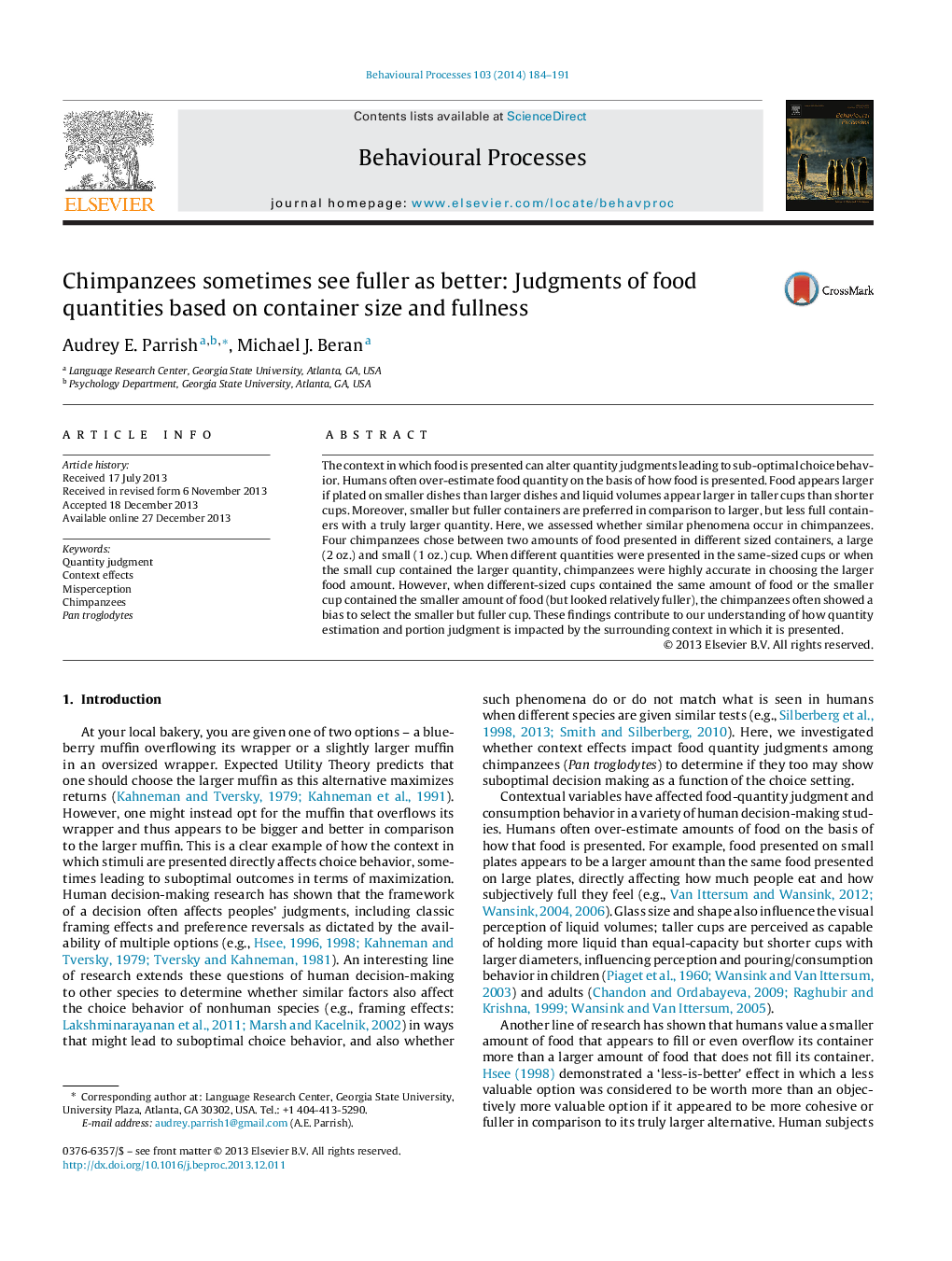| Article ID | Journal | Published Year | Pages | File Type |
|---|---|---|---|---|
| 8497328 | Behavioural Processes | 2014 | 8 Pages |
Abstract
The context in which food is presented can alter quantity judgments leading to sub-optimal choice behavior. Humans often over-estimate food quantity on the basis of how food is presented. Food appears larger if plated on smaller dishes than larger dishes and liquid volumes appear larger in taller cups than shorter cups. Moreover, smaller but fuller containers are preferred in comparison to larger, but less full containers with a truly larger quantity. Here, we assessed whether similar phenomena occur in chimpanzees. Four chimpanzees chose between two amounts of food presented in different sized containers, a large (2 oz.) and small (1 oz.) cup. When different quantities were presented in the same-sized cups or when the small cup contained the larger quantity, chimpanzees were highly accurate in choosing the larger food amount. However, when different-sized cups contained the same amount of food or the smaller cup contained the smaller amount of food (but looked relatively fuller), the chimpanzees often showed a bias to select the smaller but fuller cup. These findings contribute to our understanding of how quantity estimation and portion judgment is impacted by the surrounding context in which it is presented.
Related Topics
Life Sciences
Agricultural and Biological Sciences
Animal Science and Zoology
Authors
Audrey E. Parrish, Michael J. Beran,
